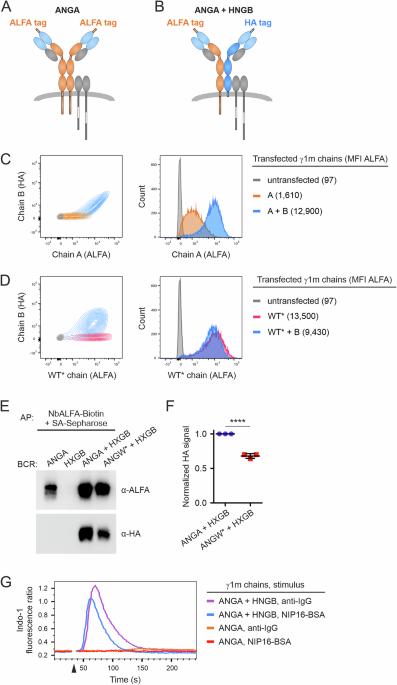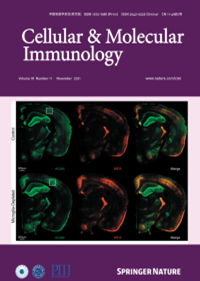Immunoglobulin divalence promotes B-cell antigen receptor cluster scale-dependent functions
IF 19.8
1区 医学
Q1 IMMUNOLOGY
引用次数: 0
Abstract
Antibodies, also known as immunoglobulins, share an evolutionarily conserved dimeric core structure with two antigen binding sites. However, recognition of foreign molecules can be achieved by monovalent binding domains, as evidenced by the T-cell antigen receptor and various innate immune receptors. Thus, the reason for the strict evolutionary conservation of immunoglobulin divalence remains unclear. In addition to being soluble immune effector molecules, each immunoglobulin is also expressed as a membrane-bound isoform in the context of the B-cell antigen receptor (BCR). Here, we generated monovalent BCRs and found that their signaling and antigen internalization capabilities were strongly impaired. By using advanced superresolution imaging of BCRs following stimulation with antigens of distinct valences, we showed that the receptor cluster scale in the plasma membrane determines the magnitude of intracellular signaling. The incorporation of additional ITAMs into single BCRs did not increase receptor sensitivity but caused cellular desensitization. Our results demonstrate that the BCR-controlled signaling machinery senses the clustering status of the BCR and that subtle changes in cluster sizes are translated into cellular responses. These findings improve our knowledge of adaptive immune receptor function and will aid in the design of synthetic chimeric antigen receptors.

免疫球蛋白二价促进b细胞抗原受体簇规模依赖性功能。
抗体,也被称为免疫球蛋白,具有进化保守的二聚体核心结构,具有两个抗原结合位点。然而,对外来分子的识别可以通过单价结合域来实现,正如t细胞抗原受体和各种先天免疫受体所证明的那样。因此,免疫球蛋白二价的严格进化守恒的原因仍然不清楚。除了作为可溶性免疫效应分子外,每种免疫球蛋白在b细胞抗原受体(BCR)的背景下也作为膜结合异构体表达。在这里,我们生成了单价bcr,发现它们的信号传导和抗原内化能力严重受损。通过使用不同效价抗原刺激后bcr的先进超分辨率成像,我们发现质膜上的受体簇规模决定了细胞内信号传导的大小。在单个bcr中掺入额外的itam不会增加受体敏感性,但会引起细胞脱敏。我们的研究结果表明,BCR控制的信号机制感知BCR的聚类状态,并且簇大小的细微变化被转化为细胞反应。这些发现提高了我们对适应性免疫受体功能的认识,并将有助于设计合成嵌合抗原受体。
本文章由计算机程序翻译,如有差异,请以英文原文为准。
求助全文
约1分钟内获得全文
求助全文
来源期刊
CiteScore
31.20
自引率
1.20%
发文量
903
审稿时长
1 months
期刊介绍:
Cellular & Molecular Immunology, a monthly journal from the Chinese Society of Immunology and the University of Science and Technology of China, serves as a comprehensive platform covering both basic immunology research and clinical applications. The journal publishes a variety of article types, including Articles, Review Articles, Mini Reviews, and Short Communications, focusing on diverse aspects of cellular and molecular immunology.

 求助内容:
求助内容: 应助结果提醒方式:
应助结果提醒方式:


